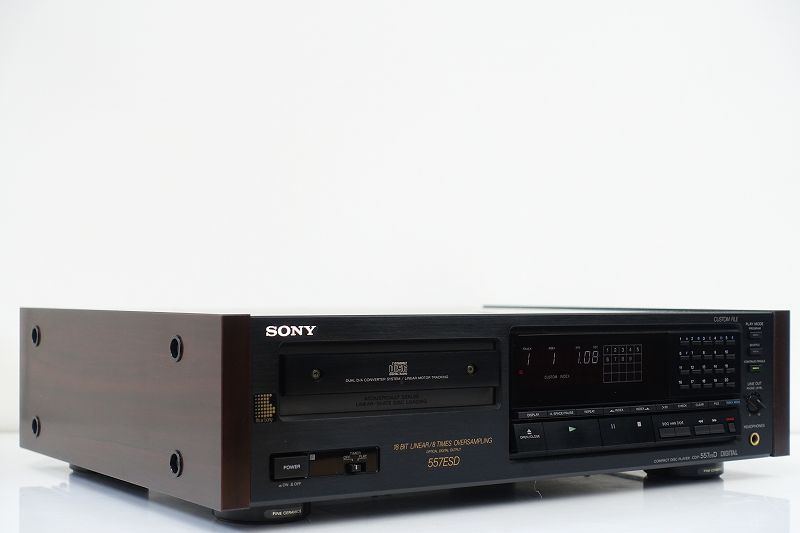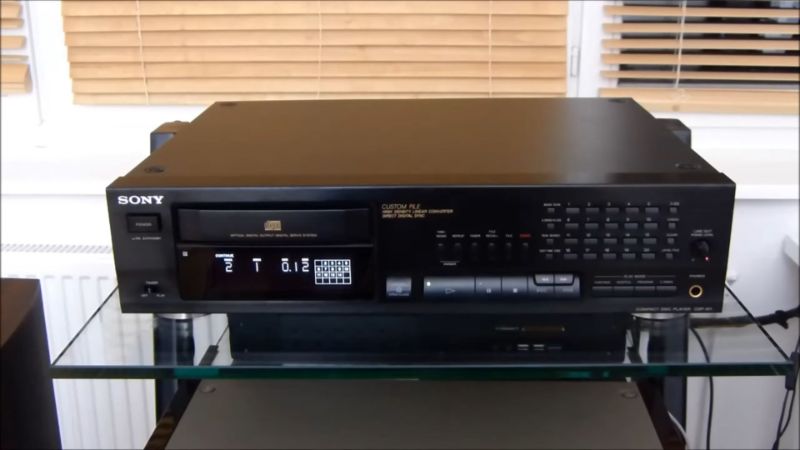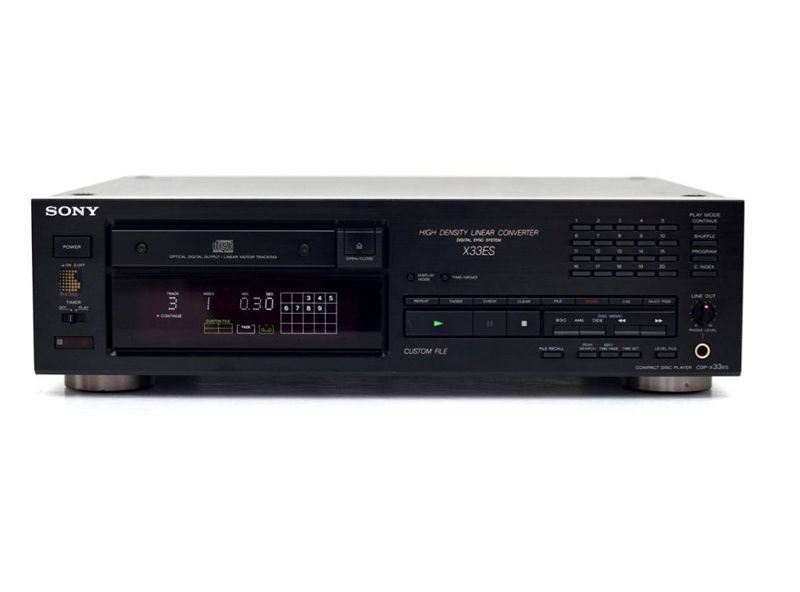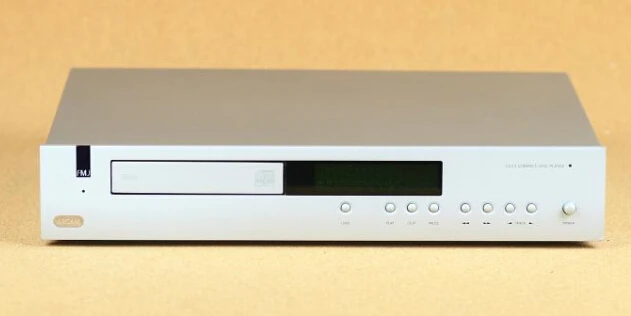The dependence on Philips’ innovative Bitstream decoding system is the center of attention in the CD840. This model costed a little more than it’s predecessors, but not because of the new Bitstream circuitry…
Indeed, hi-fi fans were assured that the Bitstream chips’ basic simplicity will drive down pricing. The CD840, on the other hand, is towards the top of the Philips line because it is jam-packed with operational functions.
The CD840 is significantly lighter than the CD960 (weighing in at 4kg and 10kg, respectively), implying a larger use of plastics. However, with redesigned shockproof feet and other features, its distinctive boxy construction gives a fair measure of stiffness.
The CD840 has a slower-acting disc drawer. On both the front panel and the very elaborate remote-control handset, all of the standard features are available. Random Play, 20-second Scan of each track (or 10-seconds if Scan and Fast are pressed together), Repeat, and other options are available.
Not one, but two FTS (Favorite Track Selection) memory stores are included in the extra tricks. This originated as a Philips-only function, but I noticed that others were quickly catching on and stealing the idea. The novel function stores the sequence of tracks you’ve selected to program on each of your discs (up to roughly 200 CDs) and will automatically play that selection anytime the disc is reloaded into the machine. You can put up two separate programs for each disc using two FTS memories.
There’s even a FTS Info function that shows (a) the number of discs programmed in FTS1 and FTS2, (b) the remaining memory space, (c) the number of each disc and the number of times it’s been played in order, and (d) the title you’ve given each disc. This third Title option allows you to give your favorite picks an identification name or code of up to 12 characters. These names, as well as other ‘useful’ messages like “Tray Open,” “Insert Disc,” “Tray Close,” “Reading,” and “Disc Ready,” appear on a dedicated Active Info strip of the display.
The brightness of the entire display may be modified in eight increments “to meet the room lighting circumstances,” and Personal Presets can be used to introduce different fade-in and fade-out timings, ranging from 0 to 20 seconds, for example. A Record Sync feature, which works with compatible Philips cassette decks, commands the recorder to begin recording when the CD starts, notes when the tape ends, returns the CD player to the beginning of the track currently playing, and resumes recording when the cassette is turned over or auto-reversed. It also adjusts the length of the tracks to the tape length, and so forth.
There are gold-plated coaxial and Toslink optical (lead supplied) digital outlets for feeding to a stand-alone D/A converter or an amplifier with the necessary D/A converter built-in, in addition to the traditional pair of phono sockets for analogue output, for which a twin low-loss cable with gold-plated plugs is supplied. These digital outlets, of course, skip the one-bit Bitstream conversion stages.
When Philips originally launched the now-ubiquitous Compact Cassette away in 1963, the benefits of creating a worldwide standard specification for any new consumer product were abundantly shown. When Philips and Sony created the famed Red Book standard for Compact Disc in the early 1980s, they aimed for the same possibility for compatible interchange of software and hardware in any country around the world, which all licensed disc and player makers must adhere to.
Unfortunately, this commonsense acceptance of standardization as a precondition for a successful launch of an ambitious new format has the unintended consequence of freezing performance at the level possible with current components (chips) and technological know-how. In retrospect, both the cassette and the CD could have been better if they had been released a few years later.
As a result, we’re stuck with the standard of 16-bit linear encoding and 44-1kHz sampling frequency used by all authorized CDs. However, there is plenty that can be done to improve the consumer format’s reliability, precision, and subjective sound quality. Engineers in recording, post-production, CD mastering, and duplication are constantly improving their preparation phases, for example, by using 20-bit processing to eliminate signal constraints on the route to the final (standard) CD pressing.
Simultaneously, designers of high-end CD players have been working on a slew of independent circuit and mechanical advancements aimed at improving the accuracy of conventional CD scanning and eradicating the audibly deteriorating characteristics of early D/A converters and analogue output stages. Even when they were exceedingly intricate and somewhat unreasonably expensive, many of these ‘improvements’ featured a significant amount of wishful thinking and delivered very modest sound enhancement.
Understandably, the market’s eyes and ears were largely drawn towards Philips’ breakthrough Bitstream technique both aesthetically and mathematically. It solves the quantization inaccuracy (waveform approximation) inherent in the 16-bit encoding’s staircase of possible digital levels, which I believe is the CD format’s main flaw. However, it achieves so by relying on selected and individually adjusted in situ components to lower the effective size of the staircase steps rather than opting for lengthier and more expensive 18-bit or 20-bit converters. Instead, it fully eliminates the stairwell effect.
When Bitstream was first proposed, some were understandably confused. In general, a one-bit system is used to decode the 16-bit digital signal from the CD, with 256-times oversampling. According to the instantaneous value of the original waveform, the II 3 million (44,100 x 256) pulses issuing from the quantizer are given values of + 1 or — 1 and packed more or less densely above and below the zero datum line (Pulse Density Modulation). Without the usual quantization staircase glitches, simple analogue low-pass filtering yields the appropriate signal.
As the table of findings reveals, the CD840’s measured performance is comparable to that of any other decent CD player, and it even rivals the earlier CD960 model in every way. Additional low-level linearity tests showed Bitstream’s increased resolution all the way down to 90dB. Subtle changes were also discovered with close listening.
In an acoustic situation that appeared to be warmer, the new Bitstream sound was more set back. The difference was minor, and I can only assume that Bitstream’s claimed improved low-level signal resolution is allowing us to hear a little more of the reverberation tail than standard 16-bit converters. There was also less masking of inner information, giving the individual instruments and vocalists a wonderful sense of characterization.
These distinctions appealed to me, and I found myself favoring the Bitstream version in most A/B tests. Some listeners may be disappointed by the loss of brightness and aggressiveness, just as some people like to play Dolby-encoded cassettes without the decoding switched on “because they sound brighter”. This causes a center soloist to seem not just distant but also slightly softer in tone than through a typical converter.
Which is the correct answer? Only a thorough examination of the master tape would provide the answer. For my money, Bitstream has the capacity to generate a more musically gratifying sound from well-balanced CDs. Even in the present day, the CD840 is a wonderful purchase that I can happily recommend.







